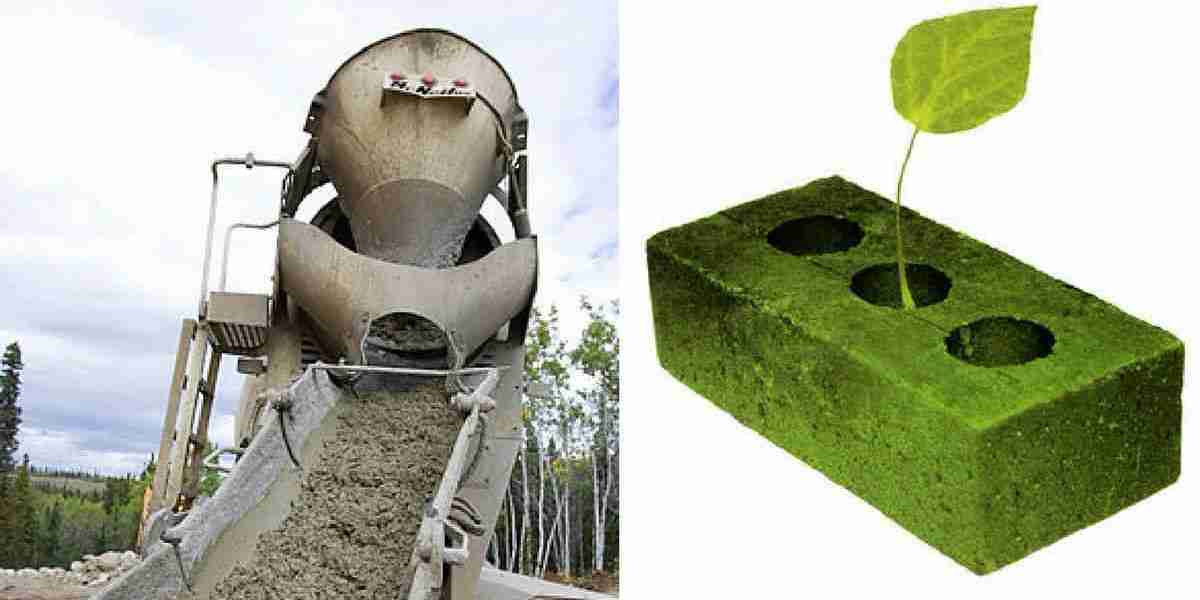The green concrete market, while emerging as a crucial segment in the construction industry, faces several challenges that could impact its long-term growth and adoption. These threats not only limit the widespread use of green concrete but also hinder its potential to replace conventional construction materials on a large scale. As the construction industry aims to adopt more sustainable practices, understanding the barriers in the green concrete market is essential for strategizing solutions and overcoming these obstacles.
High Production Costs
Despite the environmental advantages, the production of green concrete can be more expensive than traditional concrete. The sourcing and processing of alternative materials like fly ash, slag, and recycled aggregates often involve higher costs, which may discourage builders from choosing green concrete over conventional options. This cost disparity remains a significant threat in markets where cost is a critical factor, particularly in regions with tight construction budgets or less regulation on environmental practices.
Limited Availability of Raw Materials
The availability of waste materials such as fly ash, slag, and other by-products used in green concrete production is limited, especially in regions where these materials are not readily accessible. Without a consistent and sustainable supply of these resources, it becomes difficult for manufacturers to scale up production, which poses a threat to the green concrete market's growth. In regions that lack these raw materials, green concrete may not be a viable option, hampering its market penetration.
Lack of Awareness and Technical Knowledge
A significant threat to the green concrete market is the lack of awareness among key stakeholders, including architects, builders, and contractors. Many construction professionals are not fully aware of the advantages of green concrete, or they may not have the technical knowledge to implement it correctly. This knowledge gap limits adoption, as many construction projects continue to rely on traditional concrete, which has been tried and tested over decades. Overcoming this barrier requires comprehensive training and awareness campaigns to educate stakeholders on the benefits and use of green concrete.
Perceived Performance Limitations
Green concrete is often perceived as being less durable or weaker than traditional concrete, particularly by construction professionals who are unfamiliar with its properties. This perception creates a barrier to its adoption, as quality and durability are paramount in the construction industry. Although research and advancements in material science have shown that green concrete can perform as well as, or even better than, conventional concrete, overcoming these perceptions remains a challenge. Addressing concerns over its performance and building trust among industry stakeholders is critical to increasing its market share.
Regulatory Challenges
In many regions, existing building codes and standards may not yet accommodate the use of green concrete, making it difficult for construction companies to legally implement it in their projects. The lack of standardized regulations and certification systems for green concrete means that its widespread use may be delayed or hindered by outdated or restrictive laws. Additionally, local authorities may be hesitant to approve the use of alternative materials due to the absence of proven long-term performance data, contributing to the slow adoption of green concrete.
Resistance from Traditional Construction Practices
The construction industry, especially in established markets, is heavily reliant on conventional practices, and there is often resistance to change. Builders and contractors who have spent years using traditional materials may be reluctant to switch to green concrete, particularly when there is no immediate financial incentive or when the process of adopting new materials involves additional complexities. This resistance to innovation and reluctance to invest in new technologies remains a significant threat to the green concrete market.
Economic Downturns and Budget Constraints
Economic instability, such as recessions or economic slowdowns, can severely impact the green concrete market. During times of financial uncertainty, construction companies tend to cut costs, often opting for cheaper, conventional concrete. The economic strain can also limit investment in research and development of green concrete solutions, slowing progress in material innovations and hindering the widespread use of sustainable building materials.
Environmental Concerns Over Waste Management
Although green concrete is considered more environmentally friendly, the materials used in its production, such as industrial by-products and recycled aggregates, can pose their own environmental challenges. The recycling processes may not always be entirely eco-friendly, and in some cases, waste materials can be contaminated or not recyclable in the long term. This issue raises concerns regarding the sustainability of green concrete in the long run, particularly in regions where waste management infrastructure is lacking or inefficient.
Supply Chain and Distribution Issues
The supply chain for green concrete can be complex, especially when sourcing alternative materials from various regions. Transportation and logistics challenges can lead to delays in the delivery of raw materials, raising the overall cost and making it difficult to maintain consistent supply for large-scale construction projects. Additionally, the reliance on a global network of suppliers for these materials introduces uncertainties and vulnerabilities, particularly in regions where infrastructure may be less developed.
Technological Limitations in Production
While the green concrete market benefits from technological innovations, it still faces significant challenges related to the scalability and consistency of production processes. Existing production technologies may not be optimized for large-scale manufacturing of green concrete, and high-quality standards can be difficult to maintain across different production batches. Technological advancements are needed to streamline production processes and improve the efficiency of green concrete manufacturing, but this presents an ongoing challenge for market growth.
In conclusion, the green concrete market, despite its potential, faces numerous threats that could limit its widespread adoption and growth. Addressing these challenges will require a concerted effort from the industry, governments, and research organizations to improve cost-effectiveness, raise awareness, and develop solutions that can help mitigate these risks. By tackling these threats head-on, the green concrete market can pave the way for a more sustainable future in construction.




